Key Information After Upgrading from Zuora 360
Overview
If your Zuora tenant recently been upgraded from Zuora 360 Sync to the latest version, Zuora Data Connect for Salesforce CRM, this article will provide you with important information about the changes you can expect. Specifically, we will highlight the transition from the Sync History section in Zuora 360 to the new Zuora Connector for Salesforce CRM System Health Dashboard for sync telemetry reporting. Please read on to familiarize yourself with these updates.
Key improvements
The Zuora Data Connect for Salesforce CRM brings several improvements that will benefit you:
- Performance: Experience faster sync speeds, especially for handling high volumes of data.
- Resilience: Enjoy enhanced sync efficiency and reliability, ensuring smoother operations.
- Configurability: Select desired objects for sync directly from the Zuora UI, providing more control.
- Operational Visibility: Benefit from richer monitoring of sync operations, improving visibility into the process.
- Simplicity: Troubleshoot and triage sync errors more efficiently, leading to faster issue resolution.
This upgrade aims to deliver you a more streamlined and effective experience.
What is different?
Once the upgrade is complete, you can expect the following changes to your sync capabilities:
- Simplified Product Experience: With the upgrade, changed data in Zuora will synchronize to your Salesforce org in near real-time. Configuring batch sizes and batch modes will be deprecated.
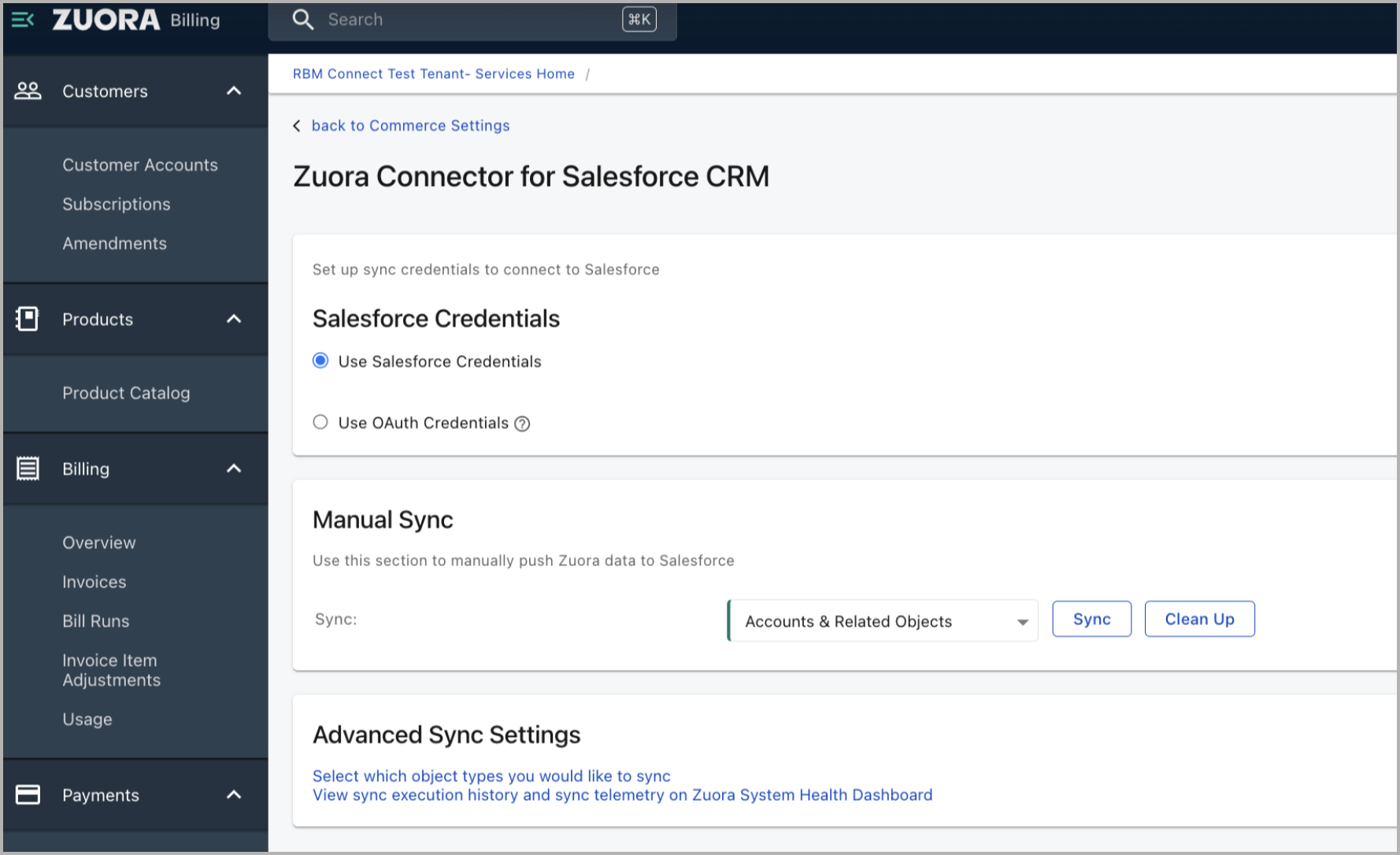
- Sync Execution Reporting: All sync reporting will be available on the Zuora System Health Dashboard, offering rich telemetry data on sync successes, failures, usage, and performance. You can filter data by object type, sync status, date range, and API action. Access the Zuora System Health Dashboard from the Zuora Connector for Salesforce CRM System Health Dashboard in the Zuora UI navigation panel.
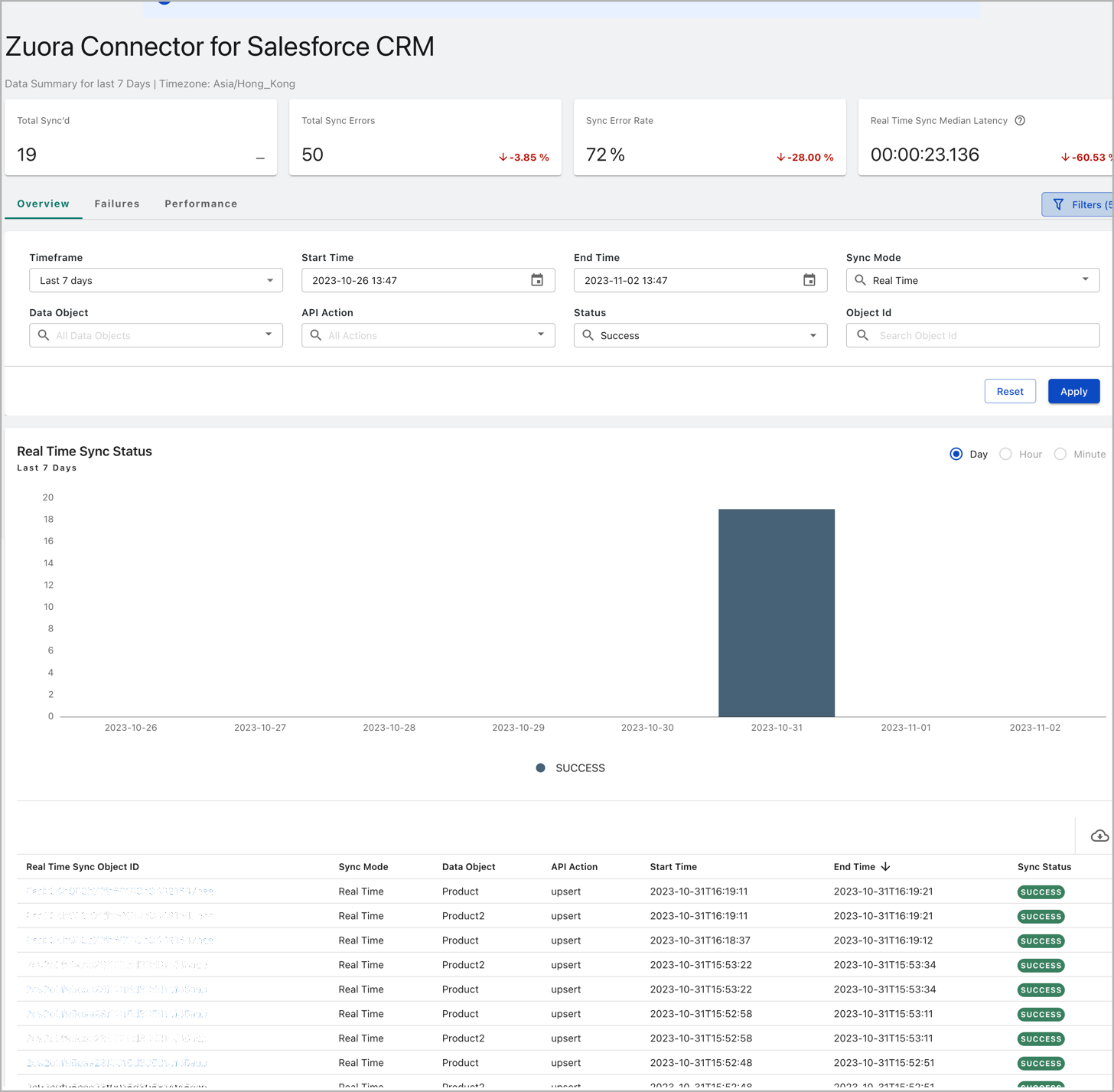
For more information, see Zuora Connector for the Salesforce CRM dashboard.
- Sync Failure Retry: All sync failures will be displayed in the "Failures" section of the System Health Dashboard, and any sync failures that permit manual retry can be initiated directly from the System Health Dashboard. For more information, see Failure retry function.
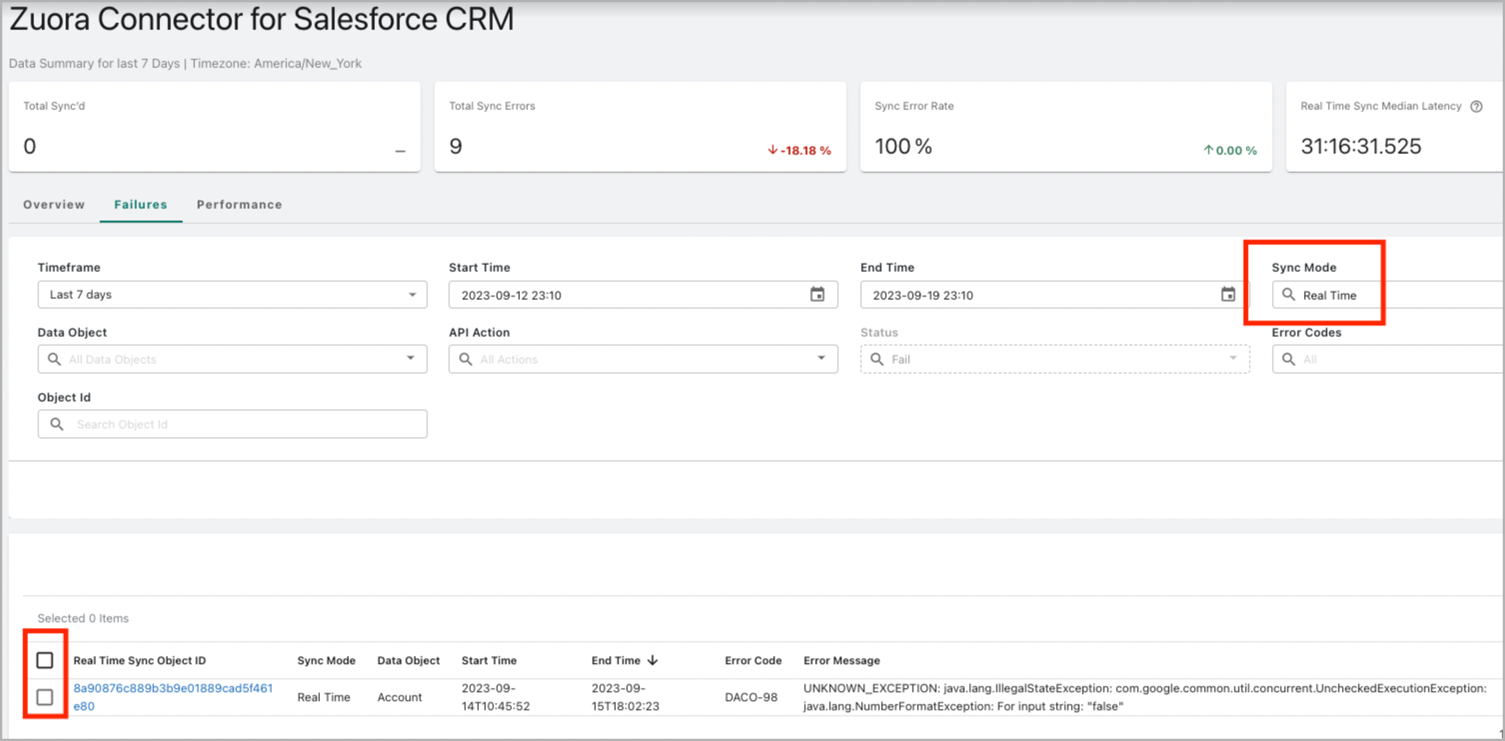

For more information, see Enable objects for sync and manage sync results. - Object Selection Capability: You can now choose the objects you want to sync to your Salesforce org from the Sync Object Enablement configuration page. After the upgrade, all your Zuora objects will automatically switch from legacy sync to the new sync service.
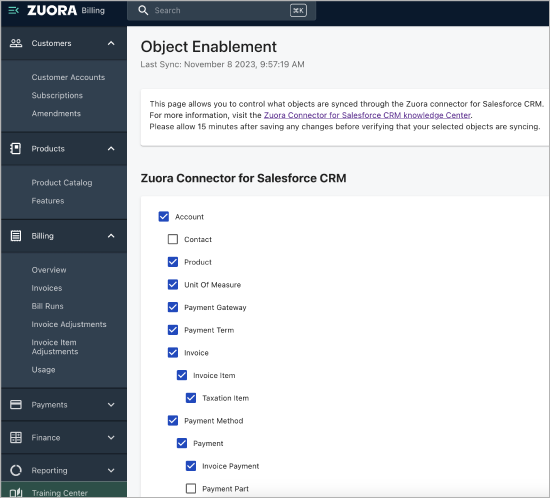
For more information, see Enable objects for sync and manage sync results.
- Email Notifications: Set up email notifications for near real-time sync failures from the Zuora Central Platform UI. Instructions for setting up or editing existing email notification setups can be found in the Zuora Knowledge Center.
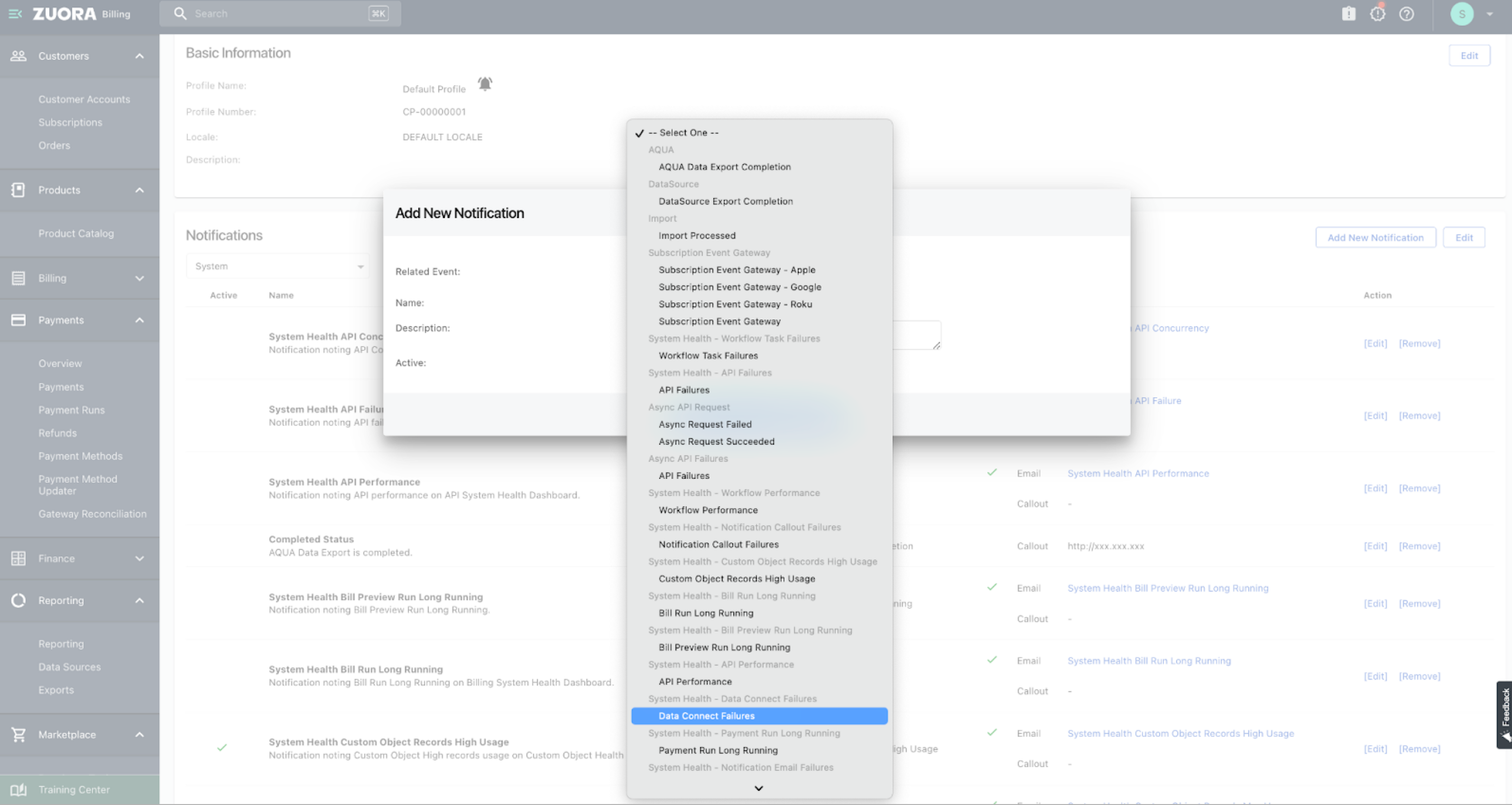
For more information, see Create and Edit Notifications.
Please find a concise video detailing the mentioned changes at the following link: https://community.zuora.com/viewdocu...brarydocuments
Impact and next steps
The upgrade process will not cause any impact or downtime for customers. You don't need to take any action to adopt these changes as all objects synced via legacy 360 will be migrated to the new sync. For additional information, questions, or concerns, please refer to the Zuora Knowledge Center or open a support ticket with Zuora Global Support.
